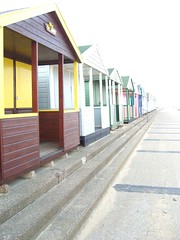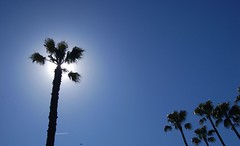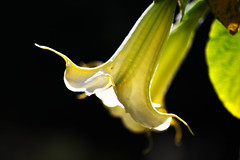Landscapes with bright skies
Sunny days arent usually too much of a problem , since blue skies have a similar brightness to sunlit landscapes. On overcast or stormy days , the sky if proportioonally much brighter. The sky and the beach hut in this shot are at the opposite extremes of the camera's dynamic range. The camera meter might find a good exposure compromise , but a manual averaging of the sky and the ground exposure is the most reliable way to record both the shadow and the highlight detail adequately
Backlighting And Silhoutettes
Camera dont know what you want . There were two ways of shooting this subject as a sillhoutte where the background is correctly exposed , or with a more generous exposure which shows detail in the subject but lets the background overexpose . Both work as picture , but it is up to you to tell the camera which treatment you want .
Intrinsically dark or light subjects
The water in this harbour was very dark and that would have led the meter to increase the exposure. As a result , the water would have come out much paler than it should have done. Worse , the boat would have been over exposed. The solution for shots like this is either to apply EV Compensation or use the camera spot metering mode to measure an area of average brightness - like the interior of the boarts weathered hull
Sunlight and Shadows
Macro shots in bright sunlight is tricky . The aim here was to find a viewpoint where the sunlit flower constrated against a darker , shadowed background. But this is likely to cause severe overexposure as the camera bases its measurements on the larger , darker background area. One solution is to use Spot Metering ; another is to experiment with different EV compenstation settings or to measure the exposure for a sunlit subject , lock the exposure , then reframe and shoot
Photography Tips




No comments:
Post a Comment